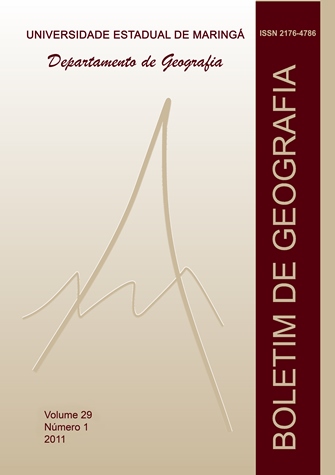<b>Distribuição e recuperação da vegetação do cerrado e remanescentes na cidade de Campo Mourão, Paraná, Brasil</b> - doi: 10.4025/bolgeogr.v29i1.10384
Resumo
A urbanização de Campo Mourão iniciou-se em meados da década de 1940 numa área recoberta por cerrados. A cidade foi construída sobre área onde outrora tal vegetação era abundante. Com o crescimento da cidade a vegetação ficou restrita a pequenas “ilhas” esparsas e isoladas nas áreas periféricas. A preocupação com a preservação desta vegetação fez com que em 1987 fosse criada em meio ao sítio urbano a Estação Ecológica do Cerrado de Campo Mourão (±13.000 m2). Diante do exposto o presente estudo avaliou a distribuição de cinco espécies típicas do cerrado: Stryphnodendron adstringens, Brosimum gaudichaudii, Annoma crassiflora, Copaifera langsdorffii e Caryocar brasiliense no perímetro urbano de Campo Mourão, os resultados indicaram que o desenvolvimento dessas espécies está ocorrendo apenas próximo à Estação Ecológica e que S. adstringens é a espécie mais degradada por conta de suas propriedades medicinais.
Downloads
O Boletim de Geografia está licenciado através da Creative Commons Atribuição 4.0 Internacional (CC BY 4.0).
Autores que realizam submissões ao Boletim de Geografia concordam com os sequintes termos:
- Autores retêm todos os direitos autorais e concedem à Revista direitos exclusivos da primeira publicação, com o artigo licenciado sob os termos da Creative Commons Atribuição 4.0 Internacional (CC BY 4.0).
- Após a publicação, fica permitido ao autor a republicação em qualquer outros meios de divulgação, desde que mencionada a fonte original.












